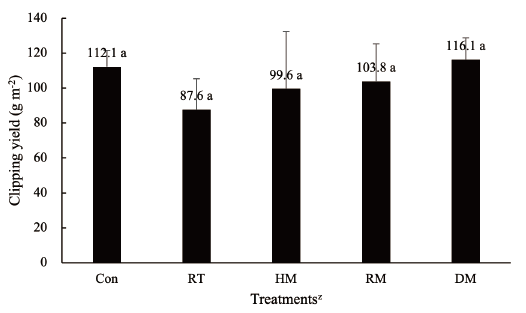Abstract
This study was conducted to evaluate the inhibition effect of mepiquat-chloride (MC) on the growth of Kentucky bluegrass (
Figures & Tables

Fig. 1. Clipping yield of Kentucky bluegrass after application of mepiquat-chloride in pot experiment. Treatments were as follows; Control (non-treatment of plant growth regulator), RT (TE 0.01 a.i. g m; 2,500 fold dilution), HM (MC 0.033 a.i. g m; 2,000 fold dilution), RM (MC 0.066 a.i. g m; 1,000 fold dilution), DM (MC 0.132 a.i. g m; 500 fold dilution). TE and MC mean trinexapac-ethyl and mepiquat-chloride, respectively. TE and MCs were applied on Kentucky bluegrass on June 11 in 2019. Error bars indicates standard deviation and different letters indicates significant different at ≤0.05 level according to Duncan’s multiple range test.


